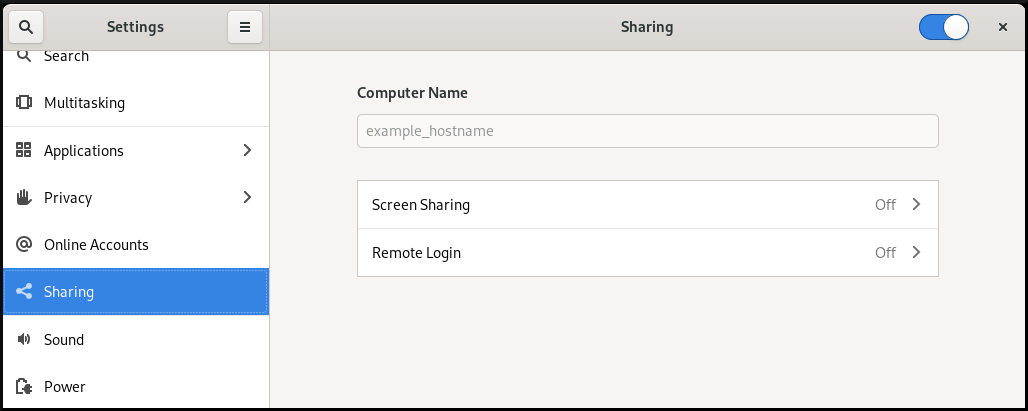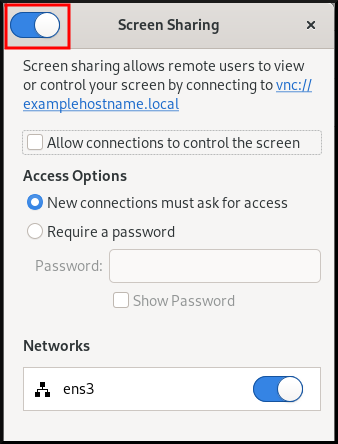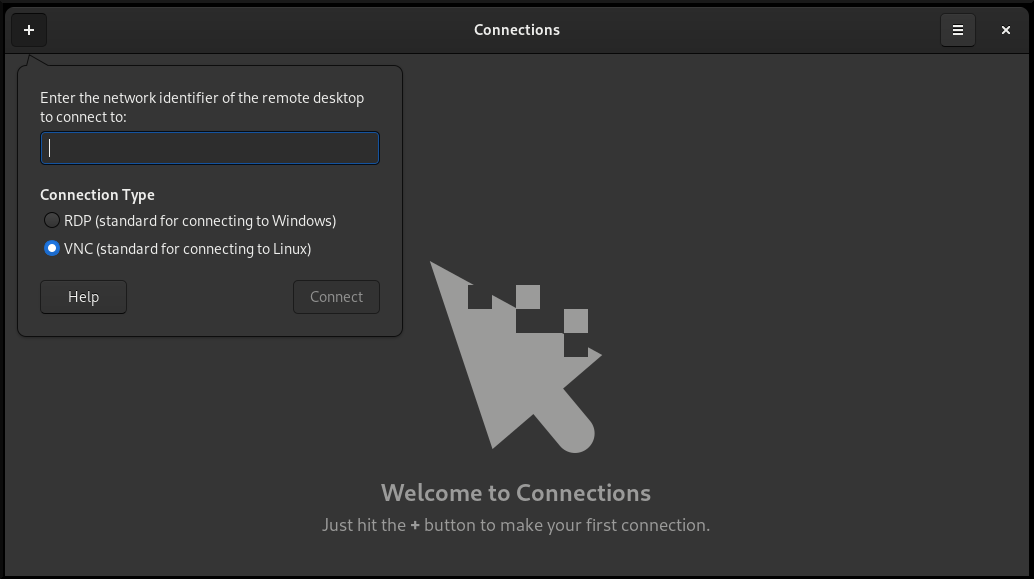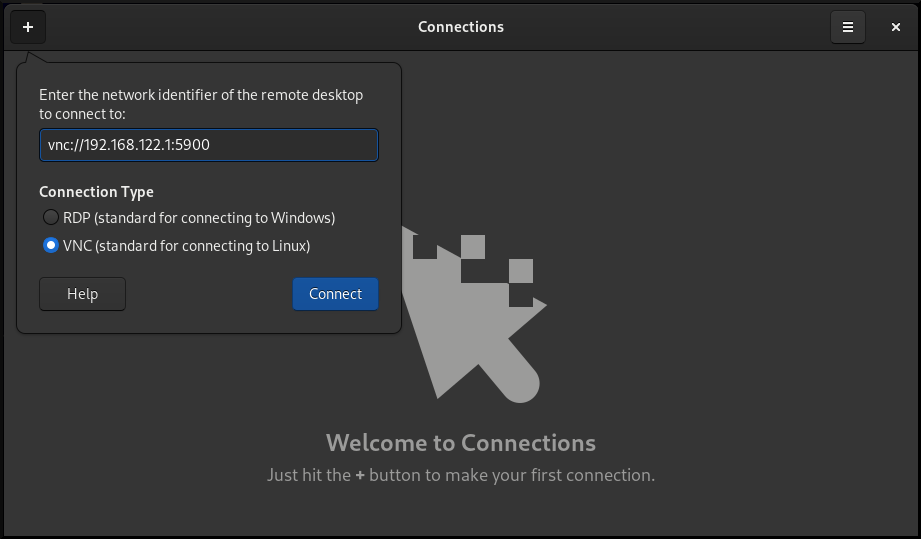Dieser Inhalt ist in der von Ihnen ausgewählten Sprache nicht verfügbar.
Chapter 11. Remotely accessing the desktop as a single user
You can remotely connect to the desktop on a RHEL server using graphical GNOME applications. Only a single user can connect to the desktop on the server at a given time.
11.1. Enabling desktop sharing on the server using GNOME
This procedure configures a RHEL server to enable a remote desktop connection from a single client.
Prerequisites
The GNOME Remote Desktop service is installed:
dnf install gnome-remote-desktop
# dnf install gnome-remote-desktopCopy to Clipboard Copied! Toggle word wrap Toggle overflow
Procedure
Configure a firewall rule to enable VNC access to the server:
firewall-cmd --permanent --add-service=vnc-server
# firewall-cmd --permanent --add-service=vnc-server successCopy to Clipboard Copied! Toggle word wrap Toggle overflow Reload firewall rules:
firewall-cmd --reload
# firewall-cmd --reload successCopy to Clipboard Copied! Toggle word wrap Toggle overflow - Open Settings in GNOME.
Navigate to the Sharing menu:

Click Screen Sharing.
The screen sharing configuration opens:

Click the switch button in the window header to enable screen sharing:

- Select the Allow connections to control the screen check box.
- Under Access Options, select the Require a password option.
Set a password in the Password field.
Remote clients must enter this password when connecting to the desktop on the server.

11.3. Disabling encryption in GNOME VNC
You can disable encryption in the GNOME remote desktop solution. This enables VNC clients that do not support the encryption to connect to the server.
Procedure
As the server user, set the
encryptionkey oforg.gnome.desktop.remote-desktop.vncGSettings schema to['none'].gsettings set org.gnome.desktop.remote-desktop.vnc encryption "['none']"
$ gsettings set org.gnome.desktop.remote-desktop.vnc encryption "['none']"Copy to Clipboard Copied! Toggle word wrap Toggle overflow Optional: Red Hat recommends that you tunnel the VNC connection over SSH to your VNC port. As a result, the SSH tunnel keeps the connection encrypted.
For example:
On the client, configure the port forwarding.
ssh -N -T -L 5901:server-ip-address:5901 user@server-ip-address
# ssh -N -T -L 5901:server-ip-address:5901 user@server-ip-addressCopy to Clipboard Copied! Toggle word wrap Toggle overflow -
Connect to the VNC session on the
localhost:5901address.


